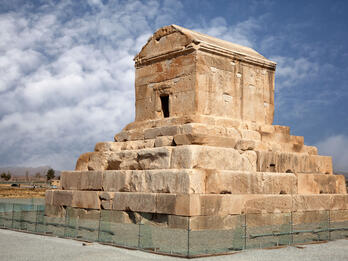Haggai and Zechariah: Prophets and the Temple
Haggai and Zechariah, two prophets from the early Persian period, focus on rebuilding the Temple in Jerusalem.
The book of Haggai presents four reports of divine communications to the prophet Haggai, in the second year of the reign of the Persian king Darius I (reigned 522–486 BCE), about eighteen years after Cyrus permitted the Jews to return from exile and rebuild the Temple. In these communications, God exhorts the people and their leaders—Zerubbabel, the Persian-appointed governor of Judah, and the High Priest Joshua—to cease their delay in rebuilding the Temple (see Rebuilding Jerusalem), and he declares that the new Temple will surpass the splendor of the First Temple. The people are assured that God will bless them further, that he will overthrow foreign nations and will choose Zerubbabel (known from 1 Chronicles 3:19 as a descendant of David) “as a signet” (a metaphor for royalty).
Zechariah, a contemporary of Haggai, also lived in the time of Darius I and encouraged the restored Judean community to rebuild the Temple. In chapters 1–8, through a series of symbolic visions explained to him by an angel, the prophet assures the people that they will succeed in the rebuilding, that God will return to Jerusalem and will bring the scattered exiles back and settle them in the Holy Land in peace and prosperity. According to Zechariah, many nations will come and worship Israel’s God and become his people; the governor, Zerubbabel, and the priest, Joshua, will lead the people; a “branch” (perhaps Zerubbabel himself) from the line of David will rule as king; and the fast days that commemorate the destruction of Jerusalem will become joyous festivals. Chapters 9–14 contain pronouncements (possibly from a different prophet or prophets) that envision the future culminating in God’s defeat of the enemy nations, rule by the House of David, the end of idolatry, and universal worship of the Lord alone in Jerusalem. The visions in these chapters influenced the growth of apocalyptic literature.


